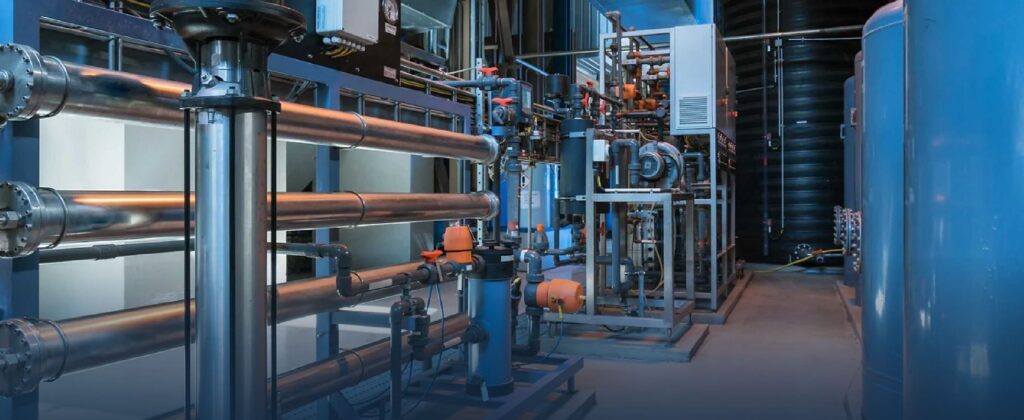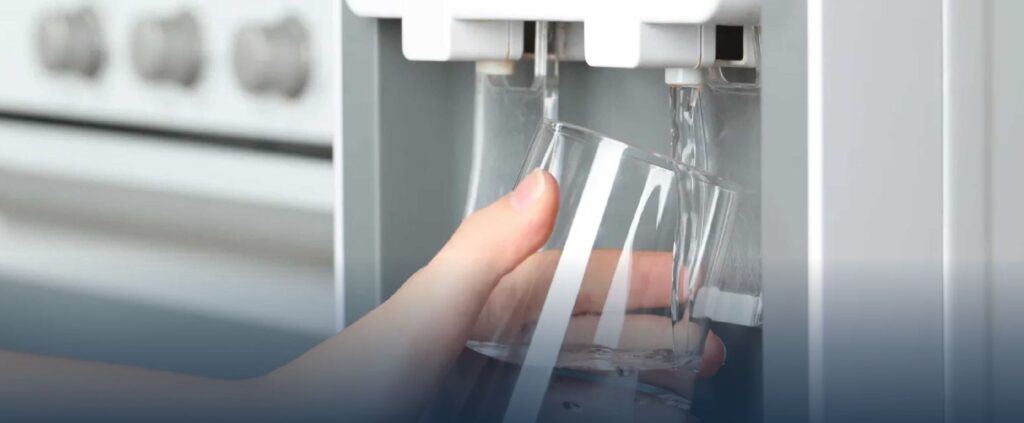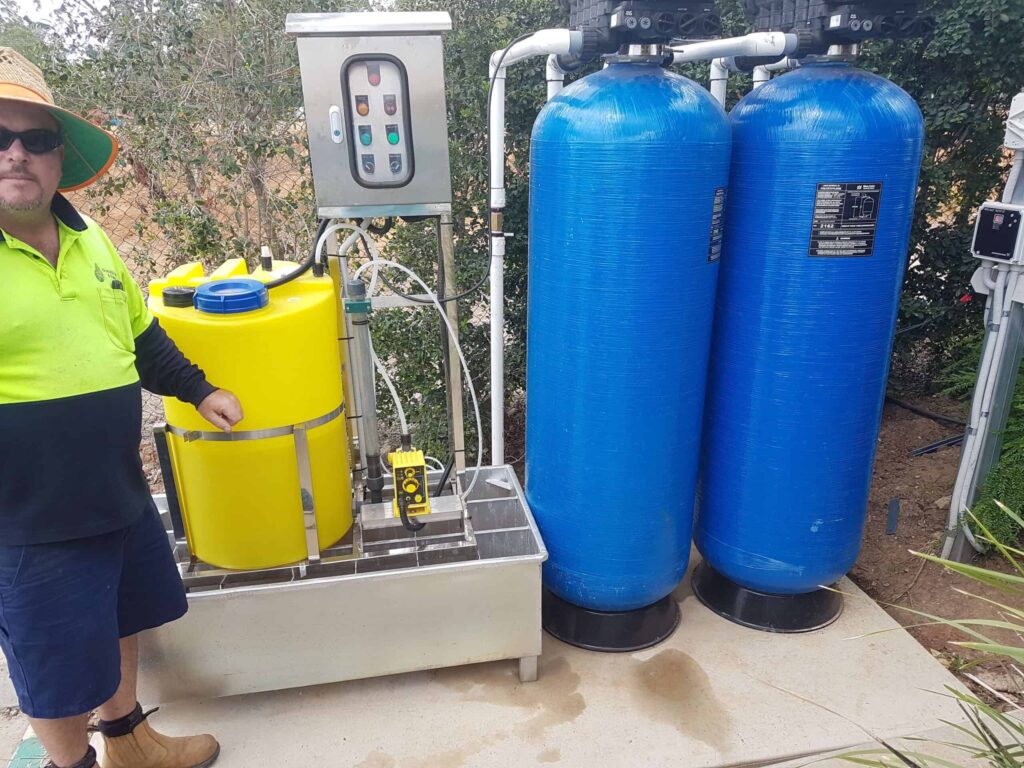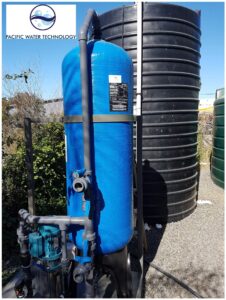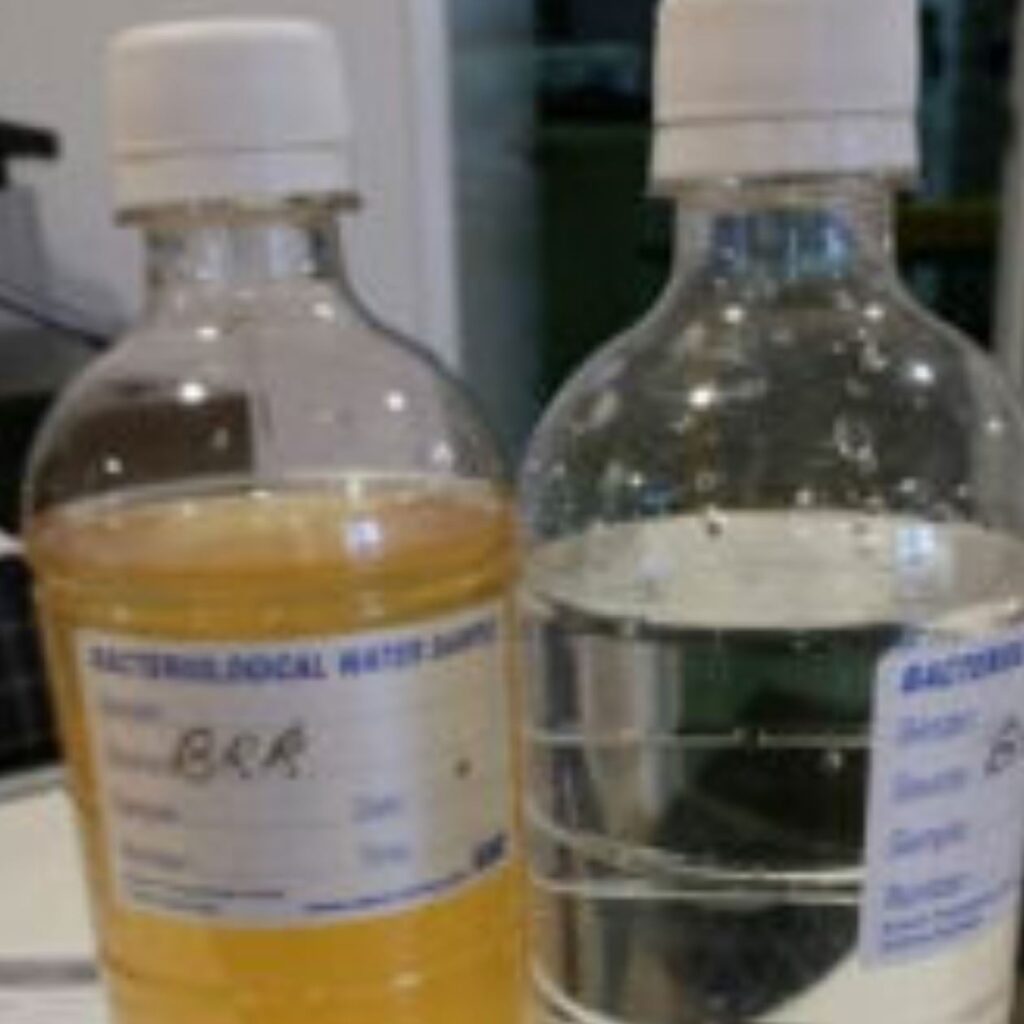~ DARA, QUEENSLAND ~
Removal of Iron from Bore Water: Blenners Transport
Iron removal filters have become an important water treatment process for providing clean and safe drinking water in Australia. Small amounts of iron are frequently present in water because iron is naturally present in the soil and because corrosive water will pick up iron from unprotected ferrous pipes. The presence of iron in water is considered objectionable because it imparts a brownish /orange colour to laundered goods and affects the taste of beverages such as tea and coffee. Some bore waters however could contain very high levels (>100mg/L). There is no health-related guideline value for iron. However, for aesthetic reasons (taste and staining) the concentration of iron in drinking water should not exceed 0.3mg/L.
[Removal of iron using DMI 65]
The most economical way of removing iron from water is by aeration (dissolved iron is oxidised and precipitates out of solution as rust Fe2O3). Iron dissolved in groundwater delivered via irrigation systems can produce unsightly rust stains on buildings, paths, fences and plants in many areas, especially on the Perth coastal plain. It may also stain clothes washed in iron-rich water and plumbing fixtures such as basins and toilet bowls. These rust stains resist cleaning with soaps, detergents and bleach. The iron can also foul membrane systems, and it is imperative to remove the iron prior to membrane filtration.
DMI-65 is an extremely powerful catalytic water filtration media that is designed for the removal of iron and manganese in aqueous solutions (water) without the need for potassium permanganate regeneration. The unique microporous structure of DMI-65 efficiently removes dissolved iron to almost undetectable levels as low as 0.001 ppm and manganese to 0.001 ppm. DMI-65 acts as an oxidation catalyst with immediate oxidation and filtration of the insoluble precipitates derived from this oxidation reaction. DMI-65 can also remove Arsenic, Aluminium and other heavy metals and Hydrogen Sulphide under certain conditions. The removal of iron is based on the oxidation reaction that converts ferrous soluble iron into insoluble ferric hydroxide which precipitates in crystalline form aggregates of sizes from 3 nanometres and larger. The aggregates coagulate in larger flocks and are retained in the catalytic bed.
In order for this oxidation reaction to proceed unimpeded, a continuous source of nascent oxygen is required. This is facilitated by the dosage of Sodium Hypochlorite solution (typically 12.5%) and maintaining a free residual chlorine content during normal operation and also during backwash.
[Chemical Free Iron Removal]
An example is demonstrated below:
Bore water with iron content of 2.8 ppm iron and 0.2 ppm Manganese was to be used as cooling water for a refrigeration system at a transport company. Service flow is 120 litres per minute, and filtered water is stored in a large storage tank.
[Bore Water Before and After Filtration]
The solution proposed was a DMI-65 twin filter system with 293 Magnum Control Head, where the flow is split to supply equal flow to each filter. This solution would then allow the 21” vessels to be backwashed at the required flow rate of 120 litres per minute.
Another issue that is sometimes associated with iron is low pH. In cooling water applications, neutral pH or higher than 7 is required to reduce the corrosiveness of the water. The total alkalinity was also less than 40 ppm therefor causing a negative Langelier saturation index. This alone may not indicate that the water is corrosive, however in this instance it may be necessary to increase the pH without adding hardness to the water. This is achieved by dosing for instance with soda ash. In this example chlorine was dosed at approximately 3 mg/l to achieve free chlorine level of >0.2 mg/l downstream of the iron removal filters. The final iron content (total) was below 0.01 ppm.
In this example the dosing of Sodium Hypochlorite is preferred as that will also have a secondary function as a biocide in cooling water. Cooling water towers can be ideal breeding grounds for biological growth, including algae, bacteria, sulphate-reducing bacteria, protozoa, and fungi. If not properly controlled, these organisms will form a layer of bio-slime that acts as a natural adhesion surface for scale formation, resulting in increased corrosion rates, restricted water flow, and reduced system efficiency.
Pacific Water also utilises alternative Manganese Dioxide Media that only requires aeration to regenerate the media and oxidise the dissolved iron. The options include Birm and also MediaPlus; both chemical free options for treating iron and manganese in bore water.


